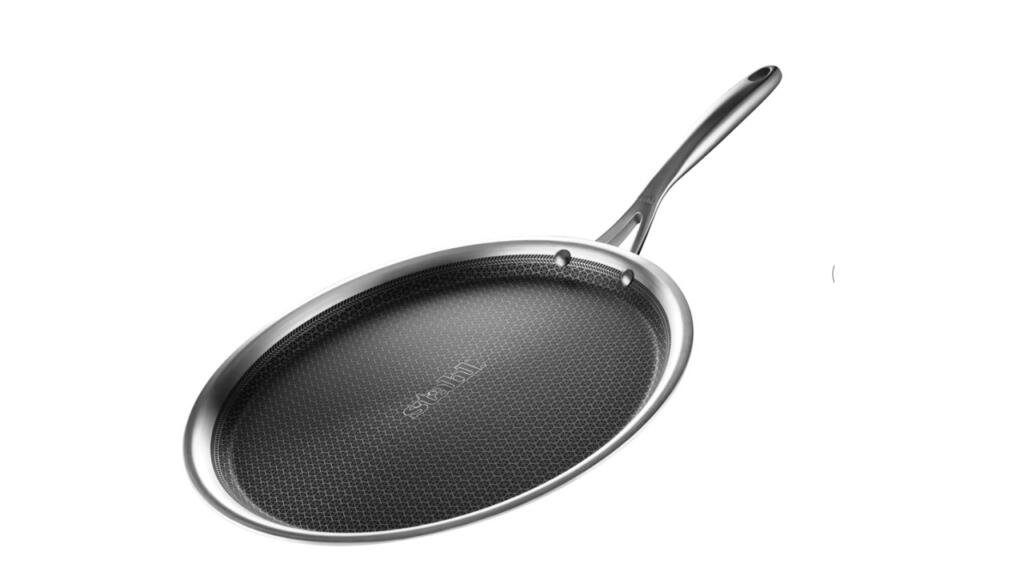Seasoning is essential and easy for a tawa. Make dosas, chapatis, pancakes, or whatever on it.
Proper seasoning and maintenance are advisable for the long life and good performance of a tawa.
Seasoning Your Tawa
1. Right Tawa
If you are to season a tawa, it must be a cast iron tawa. The nonstick ones don’t require seasoning.
2. Rinse and Clean
- Buy tawa online and wash the brand-new item with warm water to cleanse.
- Clean a used one by gently brushing away any food residues with a brush or sponge.
- Abrasives should not be used because they can damage the surface.
3. Dry Thoroughly
Dry the tawa thoroughly on the top with a clean towel. In the case of cast iron tawas, let it dry properly or it might rust too.
4. Oil Application
- Apply a little oil on the whole surface of the tawa.
- You can apply vegetable oil or flaxseed oil.
- Apply it on the whole surface, using a paper towel or cloth.
- It will help you in creating a non-stick surface and will also protect your tawa from rusting.
5. Heat the Tawa
- Heat the oiled tawa on a stove over medium heat.
- Let it heat until it starts smoking a little. This way the oil bonds to the metal and becomes a protective covering.
- Turn off the heat after about a few minutes and let cool completely.
6. Remove Excess Oil
Once cooled, use a paper towel to remove any excess oil. You should now have an even, thin layer of seasoning over the surface.
7. Repeat as Necessary
- The more you use it, the more you have to season it.
- Multiple oilings will create more and more of a non-stick coating.
- Repeated seasoning of your tawa can also promote its efficiency and help to lengthen its lifespan.
Maintenance of Your Tawa
1. Clean it after every use to prevent food staking on it.
- Clean your tawa every time after its usage to exclude food buildup.
- Avoid using soap when cleaning cast iron tawas because the soap will eliminate the seasoning formed over the years.
- Warm water will be enough and clean it off by using a brush or scraper.
- For non-stick tawas, use a mild detergent with a soft sponge or cloth.
2. Avoid Soaking
Avoid water from wetting it, especially if this tawa is cast iron. Moisture forms rusting. Clean immediately and dry up after washing.
3. Proper Storage
Store in dry room. To cast iron tawas, applying a light oil coating to the surface is preventive of rusting during storage. Paper towel can be placed between other cookware items and the tawa when it is layered.
4. Rust Prevention
If you spot rust forms on your cast iron tawa, scrub them away with salt and as little oil as possible. Rinse, dry really well and re-season your tawa as needed.
5. Do not use high heat
Try not to use very high heat while cooking in your tawa. High heat will burn out the seasoning on your tawa and can even make it warp. Opt for medium-low heat for desirable outcomes and prolong the life of your cooking surface.
6. Re-season when Necessary
Seasoning on a cast iron tawa can get washed away with time. Let it not get so bad when you are not around, food starts sticking on the surface, and the surface turns dull. Season your tawa once again. Use the steps for seasoning given above to restore its non-stick property.
7. Handling with Care
Treat the tawa like a kid. Never use a rough tool to handle a tawa and never let it burn, because these two actions may damage the tawa.
To prevent this from happening, you must use the appropriate utensils for cast iron tawas, like wooden or silicone ones.
For non-stick tawas, you should avoid using metal utensils because they can scratch the coating.
